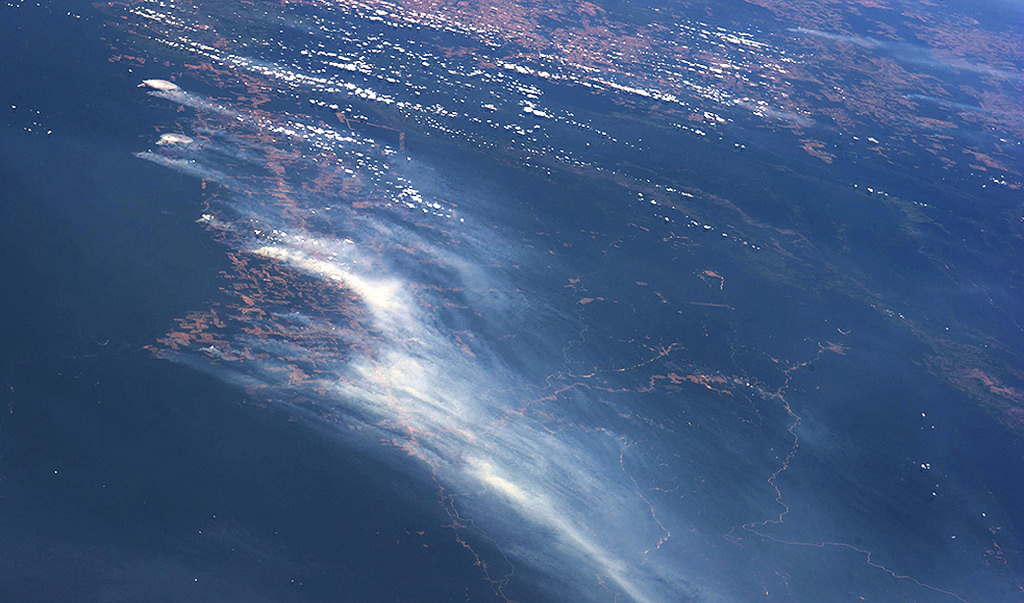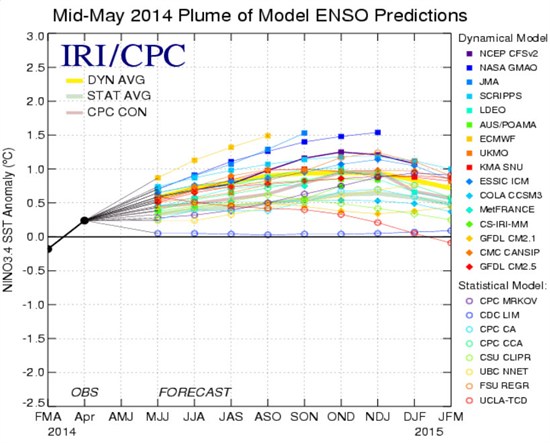
El Niño: How human history helped shape modern climate prediction
Roz Pidcock
06.18.14Roz Pidcock
18.06.2014 | 12:00pmIn the early 1500s, every few years Peruvian fisherman started noticing warmer seawater diminishing their anchovy catch, and farmers on land recorded more rain falling than usual.
Ever since then, the development of human society has been closely intertwined with the global climate pattern known as the El Niño Southern Oscillation (ENSO), and the effect it has on farming, food, water and public health.
A new study takes a historical look at the climate phenomena, and charts how society’s need to better prepare for El Niño has paved the way for modern climate prediction.
An age old fascination
Every five years or so, a change in the winds causes a shift to warmer than normal ocean temperatures in the equatorial Pacific Ocean. This shift is known as El Niño, and it has a counterpart, La Niña, which leads to cooler than normal ocean temperatures.
Combined, the two phases together are known as the El Niño Southern Oscillation (ENSO), and are responsible for most of the fluctuations in global weather we see from one year to the next.

Sea surface temperature during El Niño (left) and La Niña (right). Red and blue show warmer and cooler temperatures than the long term average. [Credit: Steve Albers, NOAA]
Each time a switch occurs between the two states, changes in the ocean and atmosphere above affect global temperature and rainfall patterns, including floods, droughts and tropical cyclones.
The ocean releases heat into the atmosphere in El Niño years. Added to the warming we’re already seeing from greenhouse gases, this pushes global average temperature up and puts El Niño years among the warmest on record.
But figuring this out has been a mammoth scientific undertaking. The new research tells the story of how scientific understanding has evolved over time, from the first observations by those Peruvian fisherman 500 years ago, to the ground-breaking discovery in the 1960s that linked the cycle to the strengthening and slackening of trade winds.
El Niño’s rolling round again
Since the last El Niño in 2009/2010, the Pacific has been in a neutral or La Niña phase. But scientists are saying with very high confidence now that an El Niño is now on its way, most likely hitting later this year.
The latest forecast from the US National Oceanic and Atmospheric Administration (NOAA) puts the chances of an El Niño developing by northern hemisphere summer at 70 per cent, increasing to 80 per cent by winter.

Climate models predict Pacific sea surface temperatures will enter El Niño conditions (more than 0.5 degrees warmer than usual) between late summer and the end of the year. Colours show different models. Source: International Research Institute (IRI) for Climate and Society
Anticipating the impacts
We weren’t always able to predict the onset of an El Niño or La Niña event so reliably. In 1982, a particularly strong El Niño event struck and caught scientists unawares, the study says. This brought the climate cycle to unprecedented public attention, and spurred further research, the study notes.
After another strong El Niño in 1997 – which is still the strongest on record – society began to demand more information from scientists about what to expect and how to minimise losses.
This set the stage for the development of modern climate prediction models to forecast the onset, timing, strength and regional impacts of ENSO events. The first global prediction tools came on the market in 1997, and today more than 20 centres throughout the world run ENSO prediction systems.
There are still things the models can’t tell us. Predicting regional climate is difficult in countries far from the tropical Pacific that may be more affected by local conditions. A bigger question still is how ENSO will be affected by human-caused climate change – the jury is still out on that one.
Different sectors, different responses
ENSO has widespread impacts. It affects the global water cycle, water resources and crop yields – a recent study found the global average yields of corn, rice and wheat were lower than normal in both El Niño and La Niña years. Infectious diseases like malaria, dengue fever, influenza, meningococcal meningitis and cholera are all highly sensitive to climate and could also be influenced by ENSO, scientists say.
Knowledge of how ENSO affects a particular sector together with improving scientific forecasts, should make it easier to adapt to such changes. For example, knowing an El Niño or a La Niña is developing in the Pacific can give farmers enough time to take precautions that could save a sizeable portion of their yield, such as planting dates, crop choice, pest control and irrigation.
But moving from scientific information about what is happening to effective adaptation strategies that build resilience is more complicated that just improving the quality of the information, the study warns. This video from the authors explains more.
Video Abstract: El Niño Southern Oscillation (ENSO) and its connections to society from IRI on Vimeo.
When two world’s collide
Society has had a long and complex relationship with ENSO. As scientific understanding of ENSO has grown, public awareness has increased with it. At the same time, society’s efforts to manage the consequences has motivated decades of dedicated scientific research into how reliably we can predict its behaviour.
An interesting point the paper raises is that although awareness of the phenomenon has grown, this doesn’t always translate to a response in different sectors affected by ENSO.
This points to the jagged intersection of science and society: where science’s remit ends and the need for political, industrial, commercial and public buy-in begins.
Zebiak, S. et al., (2014) Investigating ENSO and society relationships. Wiley Interdisciplinary Reviews: Climate Change, Doi: 10.1002/wcc.294

